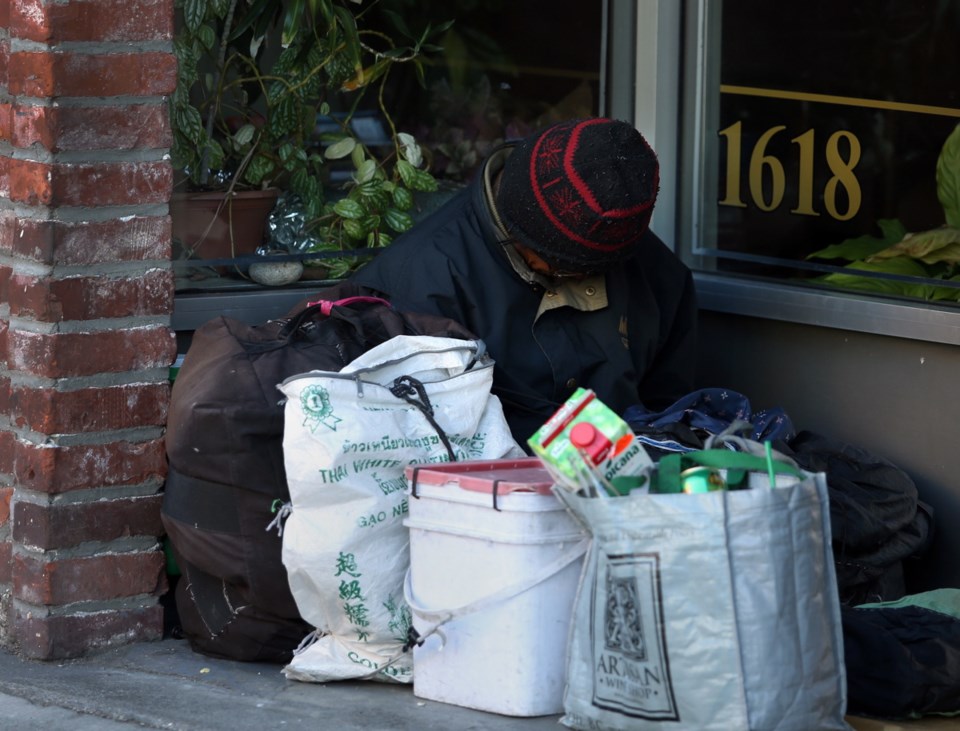With Victoria temperatures expected to continue to hover around zero, city shelters are expanding bed numbers to bring homeless people in from the cold.
Jen Bacon, regional co-ordinator of Victoria’s inter-agency Extreme Weather Protocol program, said the first tier of cold-weather response was activated on Sunday, when temperatures hit 0 C and winds reached 40 to 60 km/h.
“It was a combination of the temperature and the wind that initially triggered our program,” said Bacon. “That combination of events is considered to be ‘extreme’ according to our program.”
So shelters opened up 70 additional bed spaces, many of them mats. Normally at this time of year, Victoria shelters provide 260 bed spaces, 175 of which are permanent spaces available year-round.
Environment Canada is predicting overnight temperatures as low as -3 C and daytime highs no greater than 5 C until Friday, when it’s expected to warm up and potentially rain.
Bacon said Victoria will likely have to activate the second tier of its Extreme Weather Protocol and open another 35 mats this week. The second tier is activated when all shelters find themselves at 90 per cent capacity.
She said people accustomed to sleeping outdoors typically take a few days to seek shelter.
“People will tough it out for the first night,” said Bacon. “Then fewer people tough it out the second night.
“If we are open for more than three days, I find we get to the point where the threshold is crossed and we need to open up more spaces.”
Victoria’s Extreme Weather Protocol dates back to 2004. Since then, community organizations and volunteers have banded together, with funding from B.C. Housing, to make sure nobody is refused shelter during bad weather.
In the nine years it has been in operation, the Extreme Weather Protocol has been activated 465 times.
Bacon said she has been co-ordinating the protocol for eight years and has never turned anyone away for lack of room when it’s activated. “We have never had a situation where we do not have enough beds to accommodate everyone.”
Under the protocol, bed space during extreme weather is provided mostly by three shelters: the Salvation Army on Johnson Street, Our Place on Pandora Avenue and the Native Friendship Centre on Regina Avenue.
Bacon said the program operates a van to shuttle people from a shelter that is full to another where space is available.
“So if Our Place fills up, and it frequently does within the first two minutes of being open because it’s very popular, we take our van there, pick up the overflow and we take it to other shelters.”
Shelters have also learned to accommodate different needs to ensure people come indoors during bad weather, she said. For example, shelter operators learned space was needed for people to sit awake all night, watch TV, drink coffee and perhaps snack.
Bacon said some homeless people live nocturnally. They remain awake and move around at night, when streets are cooler and more dangerous. They sleep during the day, when temperatures are warmer and the environment is safer.
“So they were coming in and they were grateful for the warmth,” she said. “But we were basically putting them in a dark room, turning off the lights and saying, ‘Now, don’t make any noise.’
“They weren’t able to settle,” said Bacon. “So we created some space where people are welcome to sit up.”



